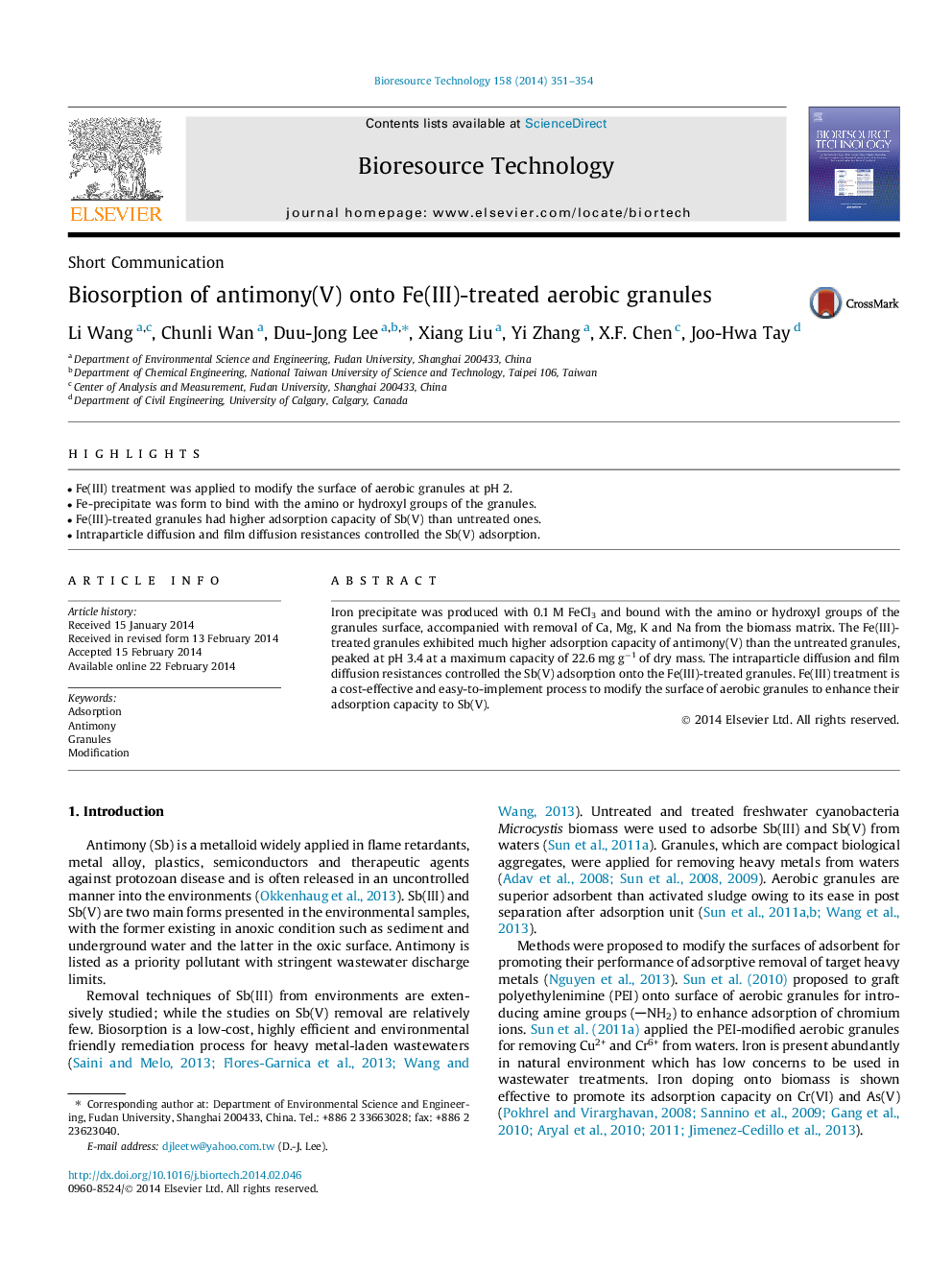| Article ID | Journal | Published Year | Pages | File Type |
|---|---|---|---|---|
| 680832 | Bioresource Technology | 2014 | 4 Pages |
•Fe(III) treatment was applied to modify the surface of aerobic granules at pH 2.•Fe-precipitate was form to bind with the amino or hydroxyl groups of the granules.•Fe(III)-treated granules had higher adsorption capacity of Sb(V) than untreated ones.•Intraparticle diffusion and film diffusion resistances controlled the Sb(V) adsorption.
Iron precipitate was produced with 0.1 M FeCl3 and bound with the amino or hydroxyl groups of the granules surface, accompanied with removal of Ca, Mg, K and Na from the biomass matrix. The Fe(III)-treated granules exhibited much higher adsorption capacity of antimony(V) than the untreated granules, peaked at pH 3.4 at a maximum capacity of 22.6 mg g−1 of dry mass. The intraparticle diffusion and film diffusion resistances controlled the Sb(V) adsorption onto the Fe(III)-treated granules. Fe(III) treatment is a cost-effective and easy-to-implement process to modify the surface of aerobic granules to enhance their adsorption capacity to Sb(V).
